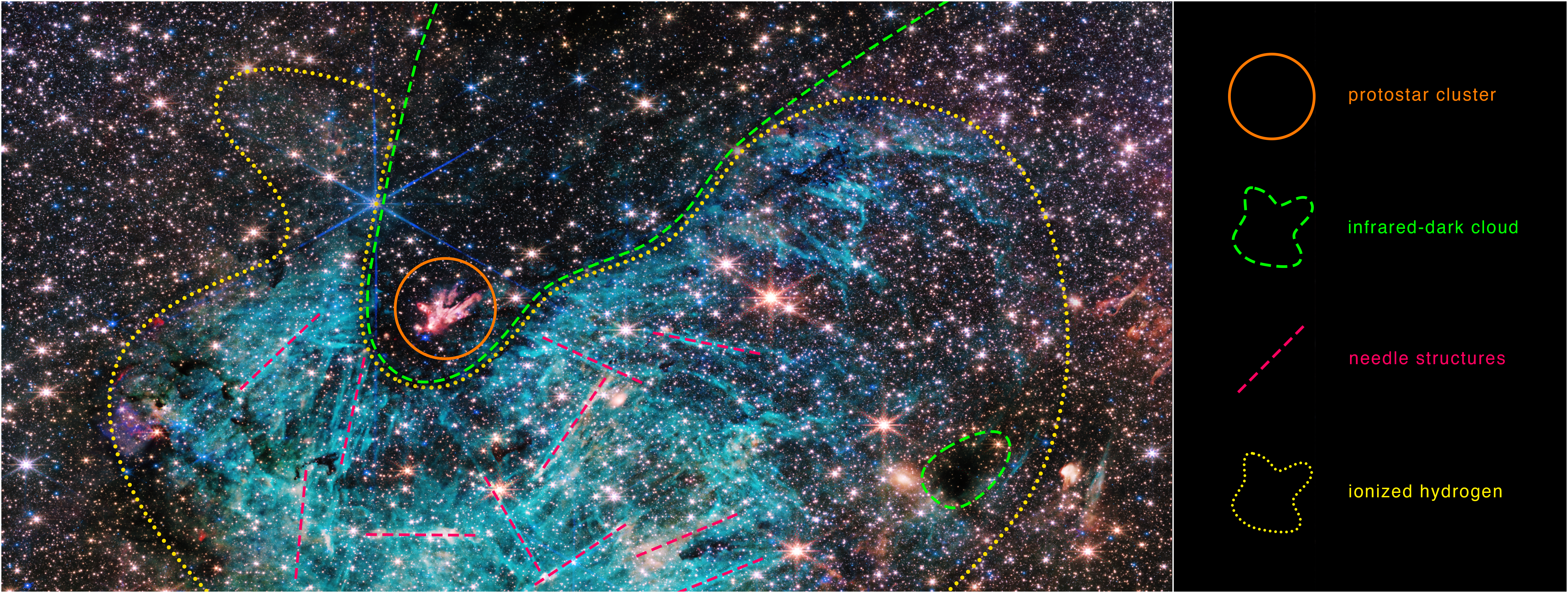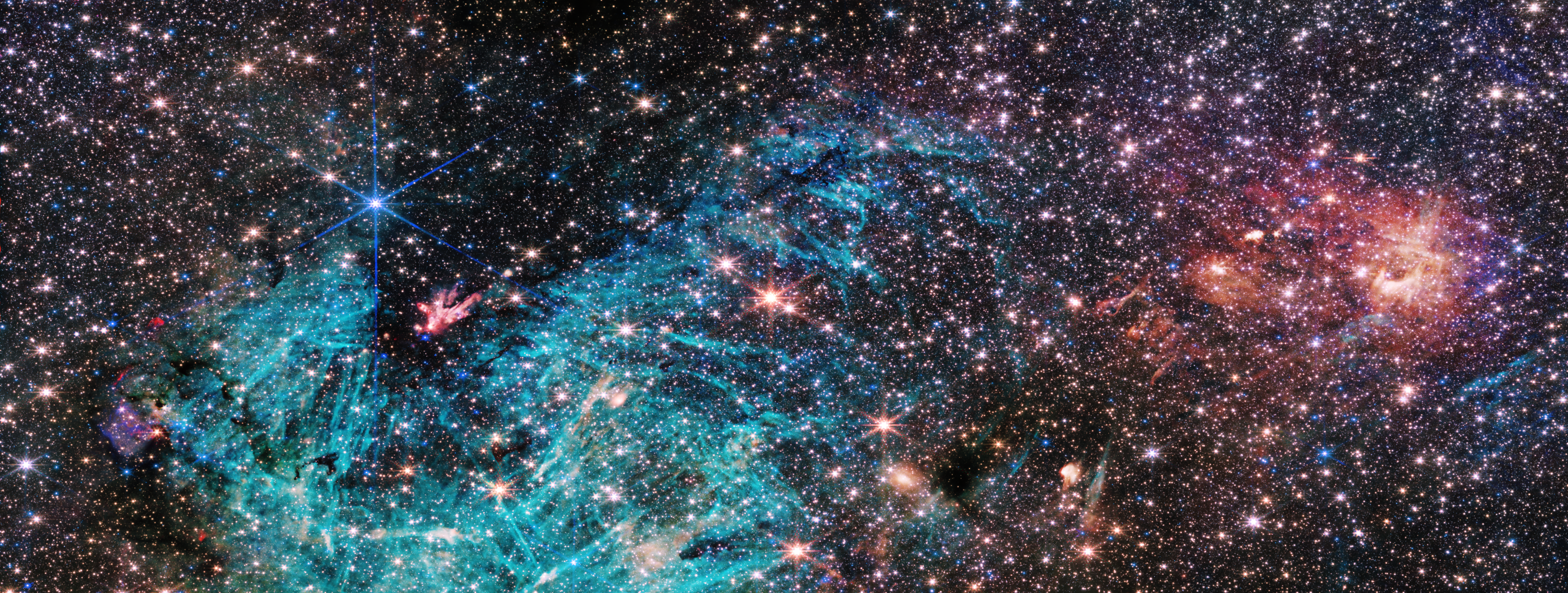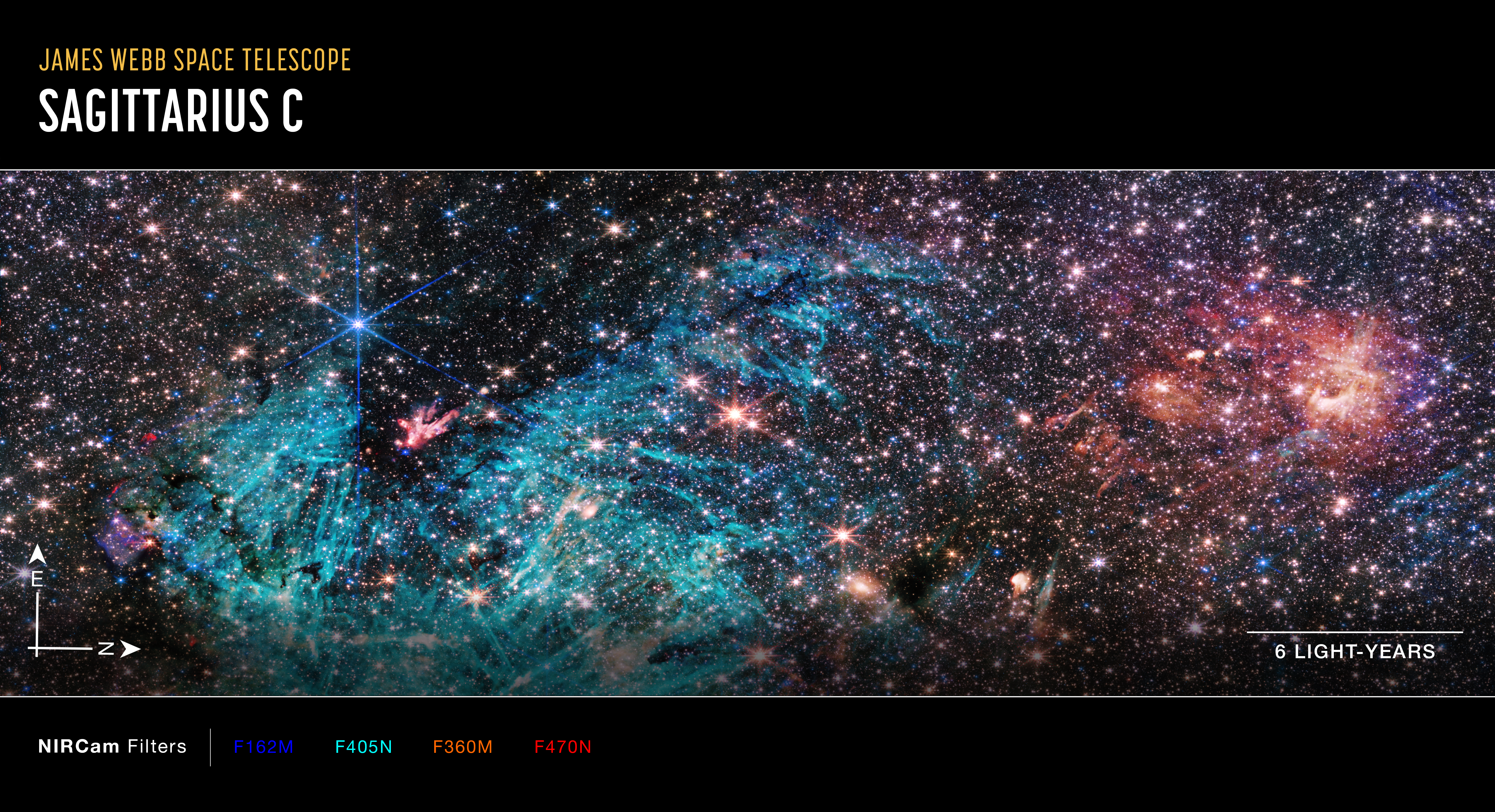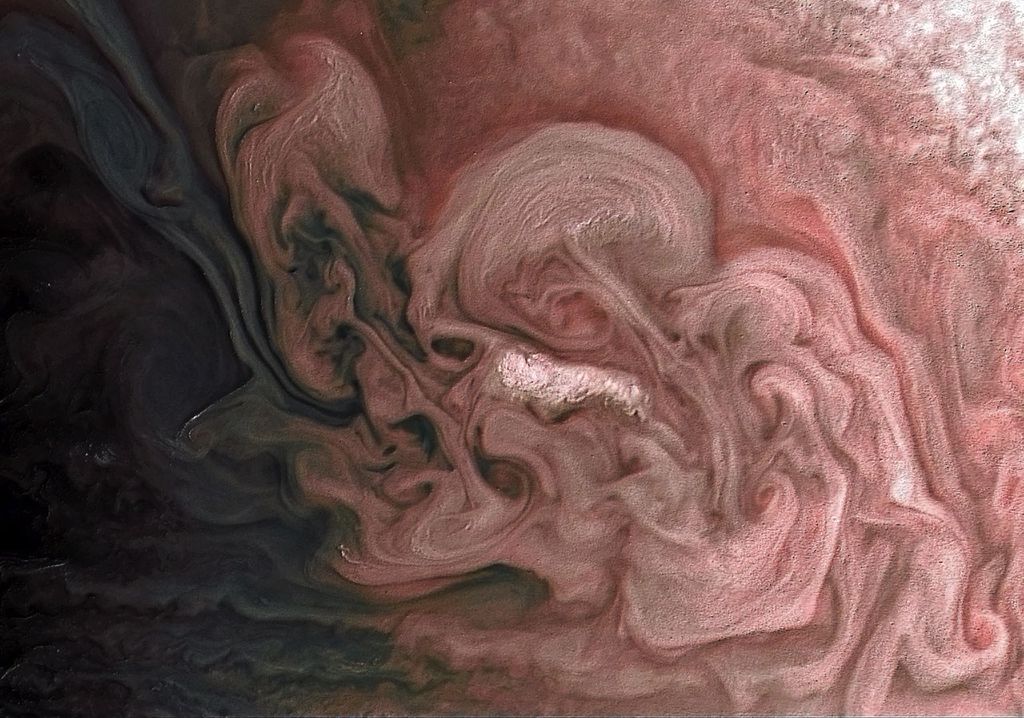1 min read
Sagittarius C (Annotated NIRCam Image)

Approximate outlines help to define the features in the Sagittarius C (Sgr C) region. Astronomers are studying data from NASA’s James Webb Space Telescope to understand the relationship between these features, as well as other influences in the chaotic galaxy center. Read the full image description here.
Extended Description and Image Alt Text
Extended Description
In the image of space, the yellow dotted line forms a fat U shape, surrounding a cyan-colored area that is much wider on its right-hand side. Within this area, straight red dotted lines indicate structures within the ionized hydrogen, oriented chaotically in multiple directions. Fitting into the curve of the U shaped ionized hydrogen region, the dashed-line of green indicates the shape of the infrared-dark cloud. At the base of the U curve the orange circle surrounds a red and white protostar cluster appearing to spray upward and to its left. To the right of the ionized hydrogen region, a small dark area is surrounded by a dashed-green line, highlighting another infrared-dark cloud.
Image Alt Text
A crowded region of space, full of stars and colorful clouds, more than twice as wide as it is tall, with features outlined in the image in different colors. A key on the right indicates what each outline is highlighting. From the top of the key down: an orange circle next to text, protostar cluster. An irregular green dashed-line shape with text, infrared-dark cloud. A straight red dashed-line with text, needle structures. An irregular yellow dotted-line shape with text, ionized hydrogen. See full image extended description for more details.
About the Object
- R.A. PositionR.A. PositionRight ascension – analogous to longitude – is one component of an object's position.17:44:40.30
- Dec. PositionDec. PositionDeclination – analogous to latitude – is one component of an object's position.-29:28:14.93
- ConstellationConstellationOne of 88 recognized regions of the celestial sphere in which the object appears.Sagittarius
- DistanceDistanceThe physical distance from Earth to the astronomical object. Distances within our solar system are usually measured in Astronomical Units (AU). Distances between stars are usually measured in light-years. Interstellar distances can also be measured in parsecs.26,000 lightyears
- DimensionsDimensionsThe physical size of the object or the apparent angle it subtends on the sky.This image is about 5.8 arcminutes across (44 lightyears)
About the Data
- Data DescriptionData DescriptionProposal: A description of the observations, their scientific justification, and the links to the data available in the science archive.
Science Team: The astronomers who planned the observations and analyzed the data. "PI" refers to the Principal Investigator.This image was created with Webb data from proposal: 4147 (S. Crowe). Image Processing: Alyssa Pagan (STScI)
- InstrumentInstrumentThe science instrument used to produce the data.NIRCam
- Exposure DatesExposure DatesThe date(s) that the telescope made its observations and the total exposure time.22 Sept 2023
- FiltersFiltersThe camera filters that were used in the science observations.F162M, F360M, F405N, F470N
- Object NameObject NameA name or catalog number that astronomers use to identify an astronomical object.Sagittarius C
- Release DateNovember 20, 2023
- Science ReleaseNASA’s Webb Reveals New Features in Heart of Milky Way
- CreditImage: NASA, ESA, CSA, STScI, Samuel Crowe (UVA)

These images are a composite of separate exposures acquired by the James Webb Space Telescope using the NIRCam instrument. Several filters were used to sample specific wavelength ranges. The color results from assigning different hues (colors) to each monochromatic (grayscale) image associated with an individual filter. In this case, the assigned colors are: Blue: F162M, Cyan: F405N, Orange: F360M, Red: F470N
Related Images & Videos

Sagittarius C (NIRCam Image)
The full view of the James Webb Space Telescope’s NIRCam (Near-Infrared Camera) instrument reveals a 50 light-years-wide portion of the Milky Way’s dense center. An estimated 500,000 stars shine in this image of the Sagittarius C (Sgr C) region, along with some as-yet...

Sagittarius C (NIRCam Compass Image)
This image of Sagittarius C (Sgr), captured by Webb’s Near-Infrared Camera (NIRCam), shows compass arrows, scale bar, and color key for reference. The north and east compass arrows show the orientation of the image on the sky. Note that the relationship between north and east on...
Share
Details
Laura Betz
NASA’s Goddard Space Flight Center
Greenbelt, Maryland
laura.e.betz@nasa.gov
NASA, ESA, CSA, STScI, Samuel Crowe (UVA)






























